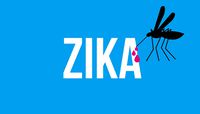Difference between revisions of "ISSS608 2016-17 T1 Project Team 8"
Jump to navigation
Jump to search
Yfchen.2015 (talk | contribs) |
Yfchen.2015 (talk | contribs) |
||
| Line 2: | Line 2: | ||
{{Term8 Menu}} | {{Term8 Menu}} | ||
| − | == | + | == Background == |
| − | + | The Ebola epidemic in Africa has yet to come to the end, another arbovirus, Zika oubreak in Americas. In February 2014, Chilie found the first native case of Zika virus infection on Easter Island. In May 2015, Brazil has been announced Zika virus infection. As of January 2016, 24 countries and regions have reported the epidemic, of which 22 in the Americas. It even became one of the biggest concerns for the 2016 Olympic Game. In this group project, we are going to analyze the spread of this virus globally since 2015 as well as its impact in Singapore. | |
| − | |||
| − | |||
| − | |||
| − | |||
| − | |||
| − | |||
| − | |||
| − | |||
| − | |||
| − | |||
| − | |||
| − | |||
| − | |||
| − | |||
| − | |||
| − | |||
| − | |||
| − | |||
| − | |||
| − | |||
| − | |||
| − | |||
| − | |||
| − | |||
| − | |||
| − | |||
| − | |||
== Group Member == | == Group Member == | ||
| Line 41: | Line 14: | ||
[[File:group8_milestone.jpg|800px|center|Group8_Milestone]] | [[File:group8_milestone.jpg|800px|center|Group8_Milestone]] | ||
| − | |||
| − | |||
| − | |||
| − | |||
| − | |||
| − | |||
| − | |||
| − | |||
| − | |||
| − | |||
Revision as of 22:57, 25 November 2016
|
|
|
|
|
Background
The Ebola epidemic in Africa has yet to come to the end, another arbovirus, Zika oubreak in Americas. In February 2014, Chilie found the first native case of Zika virus infection on Easter Island. In May 2015, Brazil has been announced Zika virus infection. As of January 2016, 24 countries and regions have reported the epidemic, of which 22 in the Americas. It even became one of the biggest concerns for the 2016 Olympic Game. In this group project, we are going to analyze the spread of this virus globally since 2015 as well as its impact in Singapore.
Group Member
YE JIATAO YANG YUWEI CHEN YIFAN

